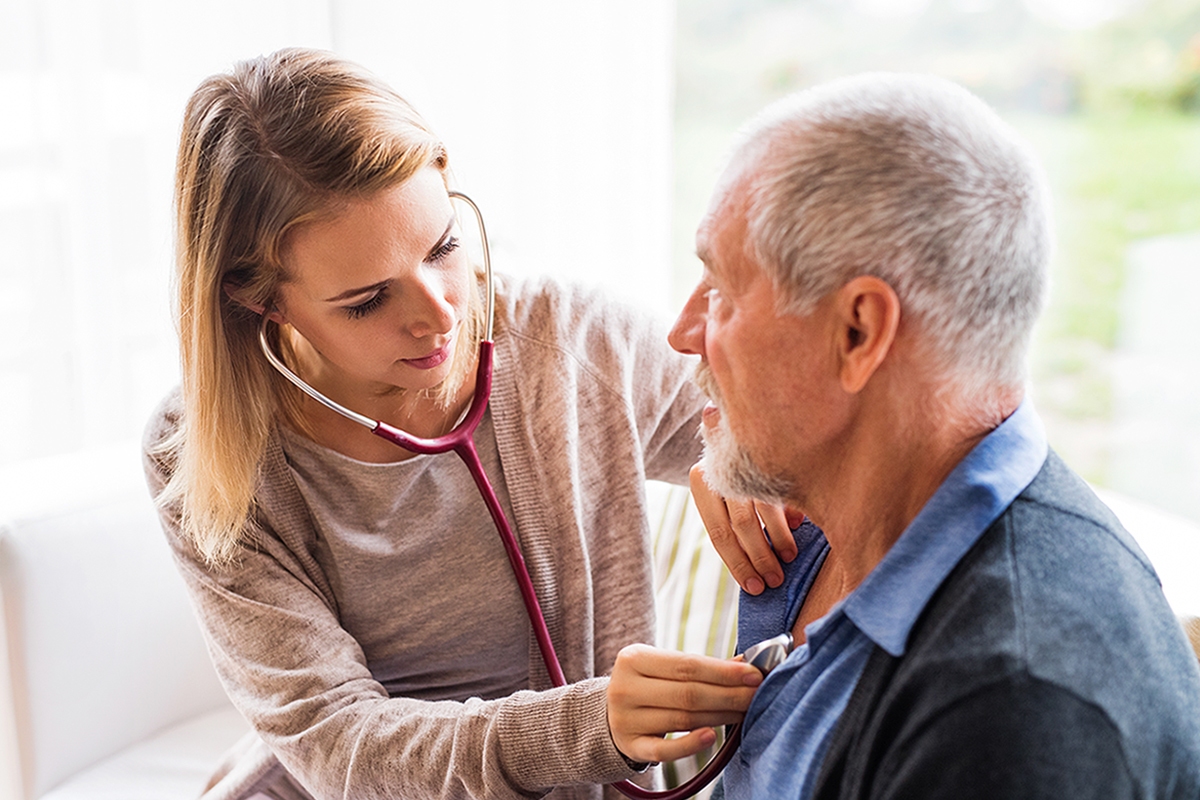Heart disease is the No. 1 cause of death in both men and women in the United States. And it affects more than older adults.
The symptoms of heart attacks are often more subtle than the “TV version” of people clutching their chests and collapsing. That dramatic scenario is closer to what sudden cardiac arrest looks like.
Many people confuse heart attacks and sudden cardiac arrest and use these terms interchangeably. Yet they are distinct health emergencies and require different interventions and treatments. Understanding each of these life-threatening conditions could save the life of a loved one — or even a stranger.
Understanding Heart Attacks
A heart attack is a circulation problem. A blockage in the artery prevents blood flow from reaching a part of the heart, which can cause the heart muscle to die. Time is critical when you or someone you care about is having a heart attack. Recognizing the signs is the first step.
Warning signs of heart attack
- Chest pain or discomfort, such as pressure, squeezing, fullness or pain (usually felt in the center of the chest and lasts more than a few minutes or it may go away and return)
- Upper body discomfort, such as pain in one or both arms, the back, neck, jaw or stomach
- Shortness of breath with little if any exertion
- Cold sweats, lightheadedness or nausea
Heart attack risk factors
- Family history of heart disease
- Age 65 or older
- Smoking
- High cholesterol
- High blood pressure
- Physical inactivity
- Overweight
- Diabetes
- Stress
Understanding Cardiac Arrest
Cardiac arrest is an electrical problem in the heart. It’s triggered by a malfunction that causes the heart to suddenly stop beating. That means the heart can’t pump oxygen-rich blood to the brain, lungs and other organs. Usually a person in cardiac arrest becomes unresponsive and stops breathing. Death can occur within minutes without treatment.
Risk factors for sudden cardiac arrest
- Previous heart attack
- Family history of sudden death or massive heart attack
- Abnormal heart rhythm (fast or slow)
- Fainting with unknown cause
- Congenital heart defect
Sudden cardiac arrest is also a major cause of death of the U.S. And it can happen to anyone at any time or place. Nearly 45 percent of patients in cardiac arrest who receive cardiopulmonary resuscitation (CPR) outside the hospital setting survive. CPR is an emergency lifesaving procedure performed when the heart stops beating. It keeps the blood flow active to buy the victim time until a trained medical team can arrive.
In addition to CPR, another important lifesaving measure is using an automated external defibrillator (AED). An AED is a computerized medical device that can detect a person’s heart rhythm and deliver a shock to the heart as needed. This defibrillation is vital to provide within 4-6 minutes, before brain damage and death occur.
Find Lifesaving CPR and AED Training
Heart attacks and cardiac arrest can happen anywhere. That’s why it’s critical for more people — not just health care providers — to be trained in CPR and AED use. Cardiac arrest can be reversed if someone is around with CPR and AED training.
CPR training has advanced over the past 10-15 years to become easier to perform. In 2005, the American Heart Association (AHA) developed a Family & Friends CPR Anytime kit that allows anyone to learn the basics of CPR, AED skills and choking relief in about 20 minutes.
The AHA also developed an easy, two-step technique called Hands-Only CPR. Using this technique, the AHA advises bystanders who witness someone suddenly collapse to call 911 and then provide chest compressions by pushing hard and fast in the middle of the victim’s chest. This newer technique doesn’t require mouth-to-mouth breathing.
Conventional CPR is still recommended for health care providers and those trained to perform it. This includes chest compressions and mouth-to-mouth breathing at a ratio of 30:2 compressions-to-breaths.
AEDs are becoming more common in public spaces, schools and businesses. They can significantly increase a cardiac arrest victim’s chances of survival.
The American Heart Association offers training in CPR and AEDs for family and friends (non-health care professionals) at various times and locations. Visit Heart.org for more information.
The McKnight Place attentive care team, which includes members who are trained in the areas of CPR and AED use, is available around the clock. This peace of mind is one more way residents live the life they choose in safety and comfort.
Come See For Yourself
For more information or to schedule a personal tour, please call 314-993-3333 (Assisted Living & Memory Care) or 314-993-2221 (Skilled Nursing).

